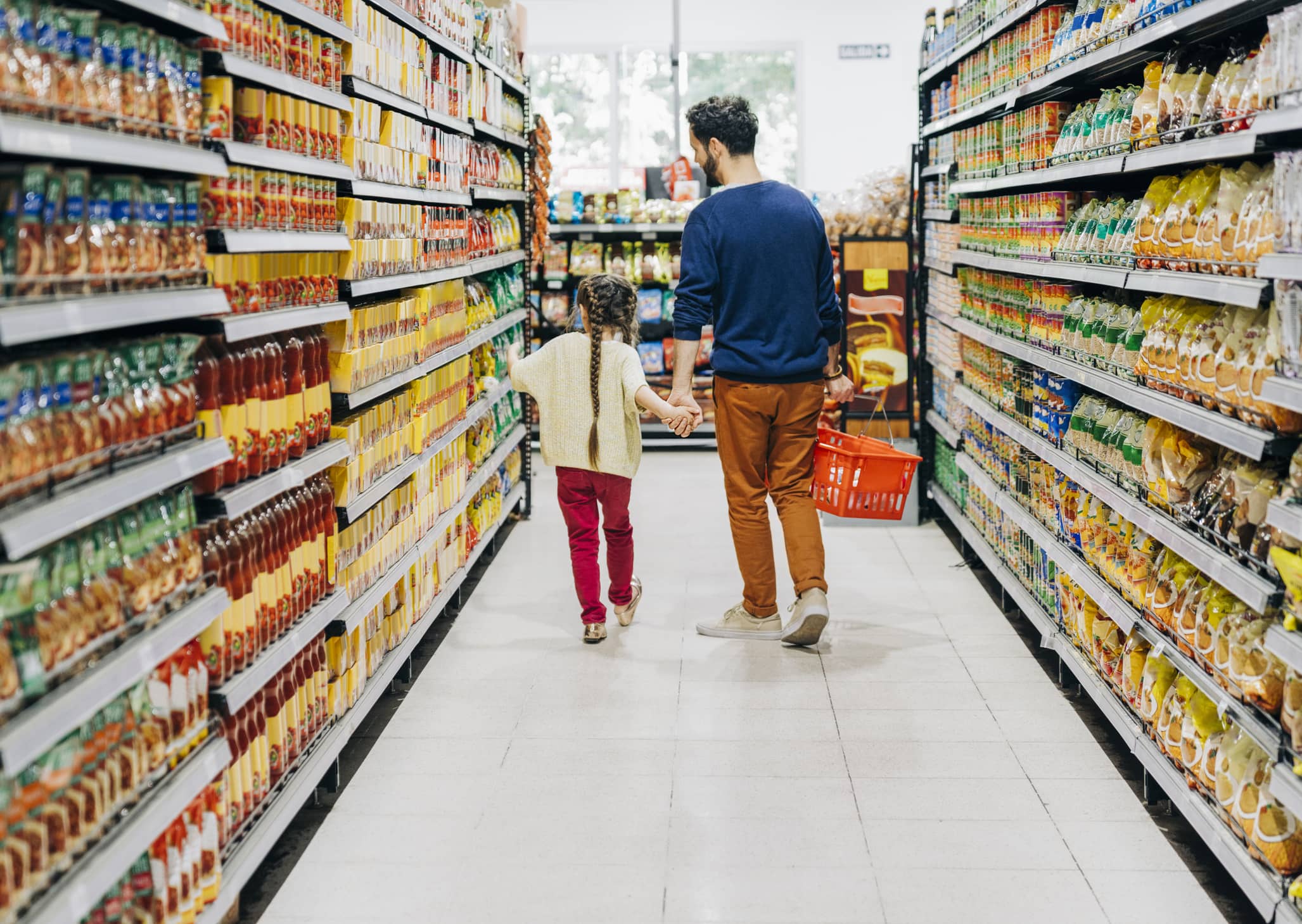
Grocery shopping is something families do every week and it’s the perfect time to teach your kids important money skills. While you shop, you can show your child how to find deals, stick to a budget, and even use coupons to save. These real-life lessons help kids build smart habits they can use forever.
1. Set a Budget
Give your child a set amount of money and let them help plan what to buy. It teaches them how to make choices and stick to a spending limit.
Example:
“You have $20 to spend on snacks and drinks for the week. What do you want to get that fits in your budget?”
This gives them practice thinking about value like picking a big box of granola bars instead of a smaller pack of cookies if it gets them more food for less money.
2. Compare Prices
Show your child how to compare brands and check the price per ounce or item. This helps them find the best value, not just the fanciest packaging.
Example:
“This jar of peanut butter is $3.00, but the one next to it is $2.25. Do you think there’s a big difference in size or taste? Is it worth the extra cost?”
You can turn this into a quick game and ask them to find the better deal on two items in the same aisle.
3. Talk About Needs vs. Wants
Use the trip to explain the difference between what we need to buy and what we just want. It helps kids understand smart spending and planning ahead.
Example:
“I know you really want that soda, but we already have drinks at home. Do we need it today, or can we use that money for something more important like lunch ingredients?”
This helps them learn how to prioritize and avoid impulse buying.
4. Let Them Make Choices
When you give kids a chance to decide what to buy, they learn how to think through options and see the results of their choices.
Example:
“You have $7 left. Do you want to get two boxes of your favorite crackers, or get one and save the rest for next time?”
This teaches decision-making and shows that sometimes saving is just as rewarding as spending.
5. Spot Sales and Use Coupons
Show them how to look for sales and scan coupons. They’ll learn that timing purchases and paying attention to deals can lead to big savings.
Example:
“This cereal is usually $4.50, but it’s on sale for $3.00 today. That’s $1.50 saved enough to grab that fruit you wanted too!”
Learning how to save money by watching prices is a skill that will help them for life.
6. Talk About Taxes
Most kids don’t realize the price on the shelf isn’t always the price at checkout. Use this time to teach them what taxes are and how they work.
Example:
“That pack of gum is $1.00, but when we pay, it’s $1.08 because of sales tax. Even small taxes can add up, see how it changes your total?”
Understanding taxes makes it easier for kids to plan ahead when shopping.
7. Reflect After Shopping
After the trip, take a minute to talk about what they did well and what they might do differently next time.
Example:
“You stayed within your $20 budget and made some really smart choices! You even saved $2 by using coupons. What do you think we could plan better next time?”
Reviewing the trip helps reinforce the lessons and gives them confidence.
Grocery shopping is more than just a chore, it’s a chance to teach your child real-life money skills like budgeting, saving, and comparing deals. By involving them in the process, you’re helping them build smart habits that will stick with them for years to come.
Next time you head to the store, bring your child along and turn it into a money moment they’ll enjoy.